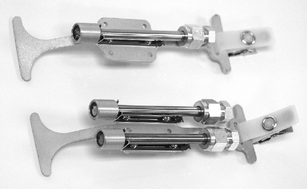24 h diffusive sampling of toxic VOCs in air onto Carbopack X solid adsorbent followed by thermal desorption/GC/MS analysis—laboratory studies†‡
Abstract
Diffusive sampling of a mixture of 42 volatile organic compounds (VOCs) in humidified, purified air onto the solid adsorbent Carbopack X was evaluated under controlled laboratory conditions. The evaluation included variations in sample air temperature, relative humidity and ozone concentration. Linearity of samples with loading was examined both for a constant concentration with time varied up to 24 h and for different concentrations over 24 h. Reverse diffusion and its increase with accumulation of sample were determined for all compounds. Tubes were examined for blank levels, change of blanks with storage time, and variability of blanks. Method detection limits were determined based on seven replicate samples. Based on this evaluation, 27 VOCs were selected for quantitative monitoring in the concentration range from approximately 0.1 to 4 ppbv. Comparison results of active and diffusive samples taken over 24 h and under the same simulated ambient conditions at a constant 2 ppbv were interpreted to estimate the effective diffusive sampling rates (ml min−1) and their uncertainties and to calculate the corresponding diffusive uptake rates (ng ppmv−1 min−1).


 Please wait while we load your content...
Please wait while we load your content...